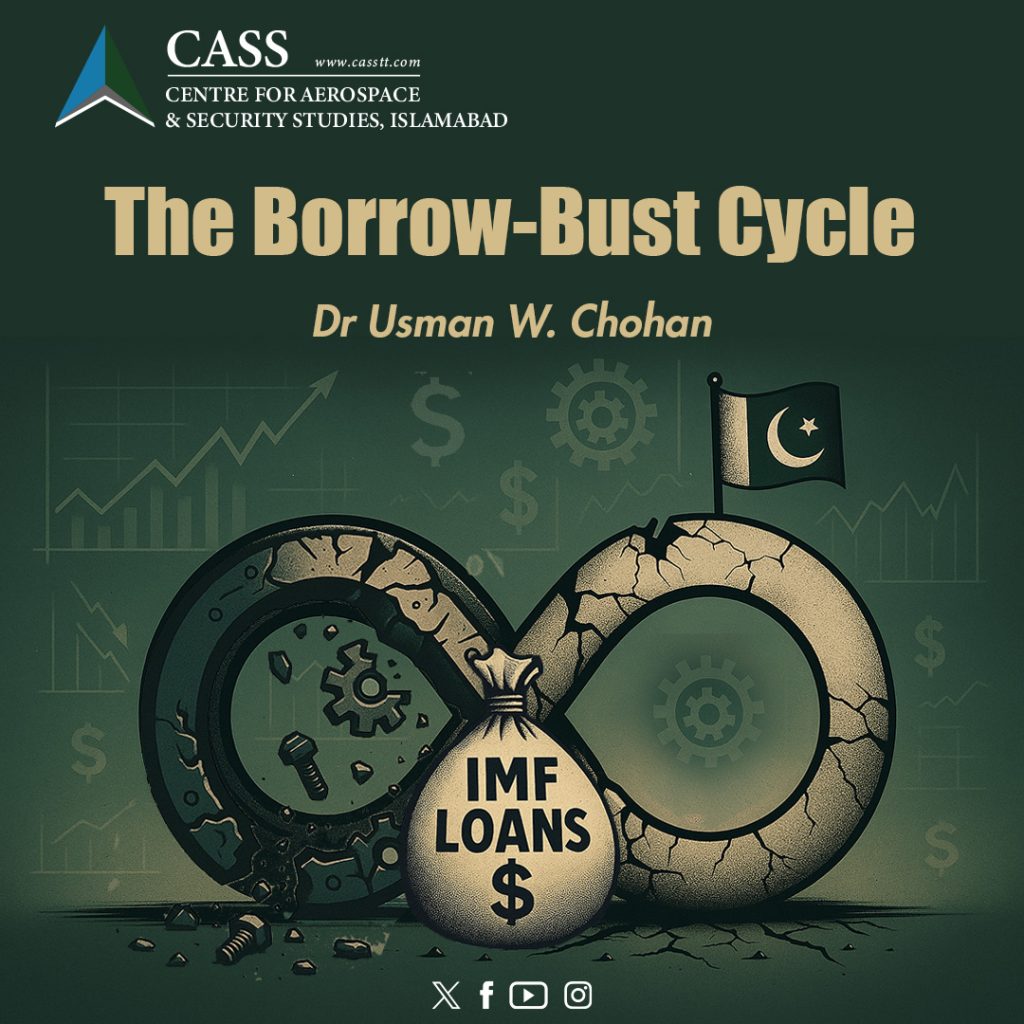Jack Watling, The Arms of the Future: Technology and the Close Combat in Twenty-First Century (London: Bloomsbury, 2023).
Reviewed by Shaheer Ahmad
Emerging technologies are catalyzing a radical shift in the conduct of modern warfare. Heralding a new era of lethality, modern technologies are functioning as a geometric blueprint that equips armies with unique toolkits to navigate the multifaceted landscape of 21st Century warfare. The Arms of the Future by Jack Watling examines the role of innovative weapons systems in warfighting today. Drawing on his extensive battlefield experience, Watling’s thesis pivots around the central theme that instead of adapting to the changing battlefield landscape, militaries are still infatuated with orthodox structures. Moreover, he argues that merely incorporating new technologies into the arsenal without fundamentally transforming organisational structures and force postures is insufficient for adapting to the evolving battlefield landscape.
In his 13-chapter treatise, Watling charts the transformation of warfare from ‘mechanised’ to ‘informatised’ conflicts. He highlights the battlefield’s heightened transparency, centrality of military communications, and the complex realities of urban combat. While examining protection and lethality, Watling underscores the tradeoffs among protection, mobility and lethality (p. 68). He contends that lethality on the battlefield has expanded considerably, whereas improvements in protection remain resource-intensive and have progressed too slowly. Consequently, he suggests that achieving autonomy is crucial for maintaining competitiveness and, in certain cases, ensuring near-invulnerability (p. 78). Due to his practical experience on Ukraine’s frontlines, he argues for prioritising ‘active’ protection over ‘passive’ protection to shield ground forces from the lethality of drones and loitering munitions. In the same part, Watling has drawn attention to the complexities of urban warfare. He states that the ability to capture urban centres is critical for any force that wishes to credibly contest its adversary. For this, he has cited useful examples of Ukraine, Nagorno-Karabakh, and the Mosul siege in Iraq (p. 103).
In the book’s second section, Watling outlines an integrated force design for land forces, structured around four subsystems to ensure survivability on the future battlefield. The first subsystem is the maneuver element, which he conceptualises as a battlefield geometry centred on an integrated battle group comprising mechanised infantry, light cavalry, critical support, and reconnaissance units. The second subsystem is the fires component, encompassing command and control (C2), target acquisition, and both lethal and non-lethal capabilities; Watling recommends a multilayered approach featuring loitering munitions, long-range artillery, and cannon systems. The third subsystem is the assault element, built around integrated armoured assault groups supported by an engineering company and a robotic autonomous systems company (pp. 135-143).
The strength of Watling’s analysis lies in the fact that he provides a foundation to military planners and academicians for future action. The point that makes the work stand out from parallel literature is its balanced approach towards the critical role of technology while also acknowledging its shortcomings. Furthermore, the book reinforces the pivotal role of land warfare and offers actionable insights for contemporary military planners.
Most importantly, the author dispels the myth that technology alone is a panacea on the battlefield, offering instead a rigorous cost-benefit analysis of its promises and perils. He stresses that militaries in the 21st Century must adapt their organisational procedures and doctrinal patterns, rather than simply adding new technologies without revising fundamental force postures. Addressing the ongoing debate about the future of tanks, he argues that tanks remain integral when adapted to the shifting nature of warfare. Likewise, he challenges inflated claims about drones, advocating for a layered approach that holistically incorporates unmanned systems into combined arms operations to maximise their effectiveness.
On the other hand, there are a bunch of shortcomings that affect the comprehensive nature of the work. While suggesting an integrated force design, there is no mention of the role of intelligent systems in guiding land forces on the battlefield. Moreover, since the book was published in 2023, it misses the urban warfare landscape of the Gaza conflict and the challenges faced by Israeli legacy battle systems amidst aggressive assaults by Hamas fighters. The foundations of the book can be augmented by including these dynamics in a new edition. Moreover, it offers little insight into the critical role of Special Forces in supporting and facilitating land operations.
Overall, Watling’s research offers data-driven, practical insights into how militaries can reshape their organisational structures for the future. By posing timely questions and putting forth concrete strategies for force design, he provides essential guidance not only for practitioners but also for scholars of military strategy.
Shaheer Ahmad is a Research Assistant at the Centre for Aerospace & Security Studies (CASS), Islamabad, Pakistan. He can be reached at [email protected].





